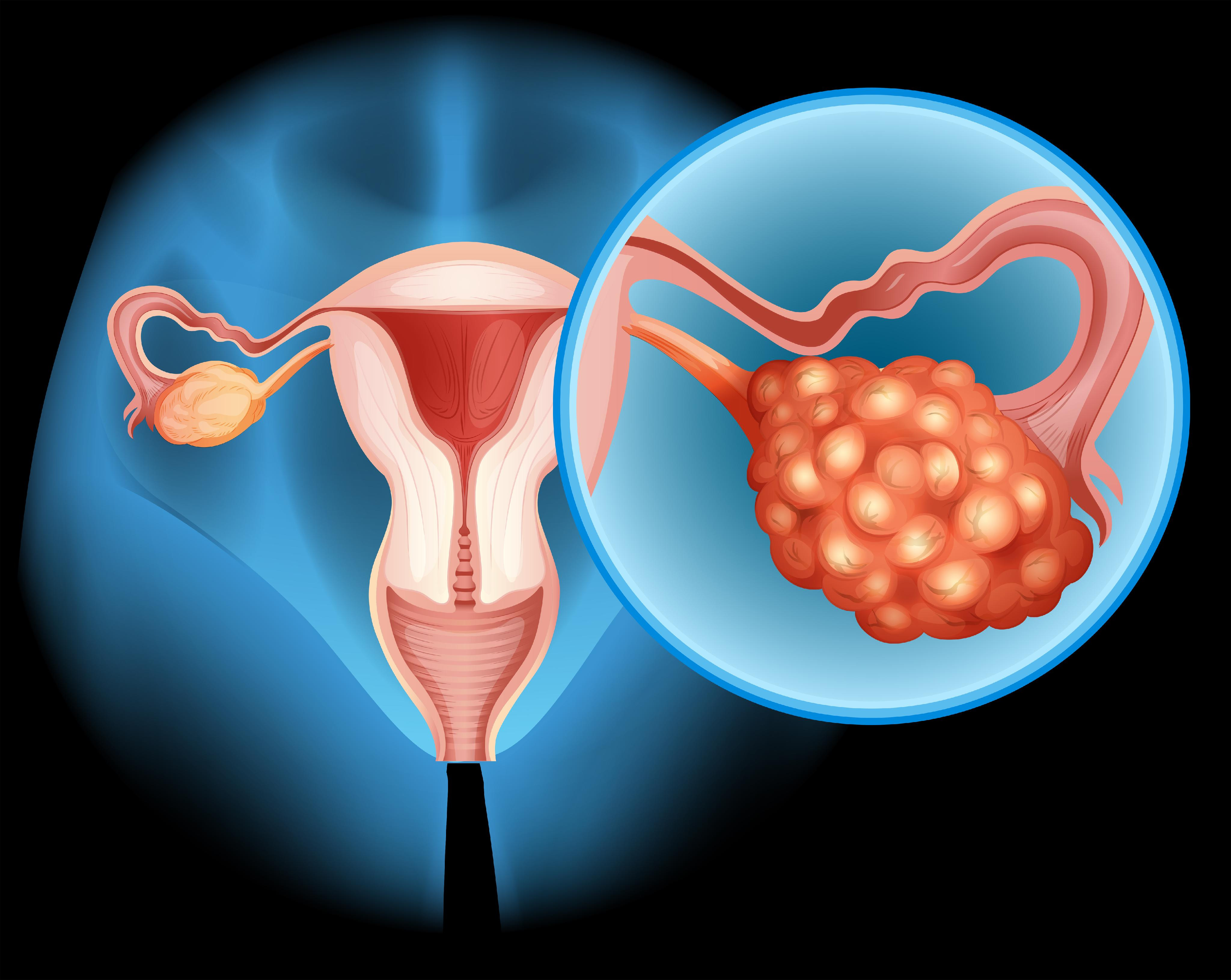Definition
Endometrial carcinoma is a malignancy where cancer cells form in the endometrial tissue or the inner lining of the uterus. Endometrial cancer generally occurs in postmenopausal women, typically between the ages of 60 and 70. According to WHO data from 2020, there were more than 7,000 cases of endometrial cancer in Indonesia, making it a common type of cancer among women.
The endometrial lining functions as a site for a fertilized egg to attach because it is part of the uterine wall. However, if the egg is not fertilized, the endometrium will shed, resulting in menstrual bleeding.
This cancer can be detected early, for example, by conducting regular check-ups if there is abnormal vaginal bleeding. Early treatment can improve the quality of life and manage the condition effectively.
Causes
Changes in cells becoming malignant in the endometrial tissue cause uncontrolled cell growth. These abnormal cells grow and multiply uncontrollably and do not die at the expected time, forming a tumor.
However, to date, experts do not know exactly what causes mutations leading to endometrial cancer. Similar to other types of cancer, the cause of endometrial cancer is multifactorial and influenced by various factors.
Risk Factor
Risk factors for endometrial cancer include:
- Use of estrogen-only hormone replacement therapy after menopause
- Use of tamoxifen to prevent or treat breast cancer. Endometrial cancer can develop in breast cancer patients undergoing tamoxifen therapy. Patients using this drug and experiencing abnormal vaginal bleeding should undergo examination and endometrial biopsy if necessary
- Obesity
- Metabolic syndrome
- Type 2 diabetes mellitus
- Exposure of the endometrial tissue to estrogen produced by the body, which can be caused by:
- Never having given birth
- Early onset of menstruation
- Menopause occurs later than the average age
- Having polycystic ovary syndrome (characterized by multiple cysts in the ovaries)
- A family history of endometrial cancer (in first-degree relatives such as mother, sister, or daughter)
- Certain genetic conditions, such as Lynch syndrome
- Endometrial hyperplasia
Read more about endometrial hyperplasia.
Symptoms
Signs and symptoms of endometrial cancer include:
- Vaginal bleeding or discharge not related to the menstrual cycle
- Vaginal bleeding after menopause
- Pain or difficulty urinating
- Pain during sexual intercourse
- Pain in the pelvic area
However, these signs and symptoms can also occur in other conditions. Therefore, if you experience one or more of these symptoms, consult your nearest doctor.
Diagnosis
Endometrial examination can be used to diagnose endometrial cancer. This disease is usually not detected in pap smear results. Therefore, a sample of endometrial tissue must be taken and examined under a microscope to look for cancer cells. One of the following procedures might be performed:
- Endometrial biopsy. A tissue sample is taken from the endometrium using a thin, flexible tube inserted through the cervix into the vagina. The tube is used to scrape a small amount of endometrial tissue, which is then collected for sampling. A pathologist will examine the tissue under a microscope to look for cancer cells.
- Dilation and curettage (D&C). This procedure involves taking a sample of tissue from the inner lining of the uterus. The cervix is dilated, and a curette (a spoon-shaped instrument) is inserted into the uterus to remove the tissue. The tissue sample is then examined under a microscope to look for signs of endometrial cancer. This procedure is also known as D&C.
- Hysteroscopy. This procedure is used to view abnormal areas inside the uterus. A device called a hysteroscope is inserted through the vagina and cervix into the uterus. The hysteroscope is a thin tube with a light and lens for visualization. It can also be equipped with a tool to take a tissue sample, which will be examined under a microscope for signs of cancer.
Other tests and procedures used to diagnose endometrial cancer include:
- Physical examination and medical history.This involves examining the body to assess overall health, including checking for signs of disease, such as lumps or other unusual findings. A history of past illnesses and treatments will also be discussed.
- Transvaginal ultrasound. This procedure examines the vagina, uterus, fallopian tubes, and bladder. An ultrasound probe is inserted into the vagina and uses high-energy sound waves to produce images of internal organs. A doctor can identify tumors by viewing the sonogram results.
Once an endometrial cancer diagnosis is established, examinations are conducted to determine whether cancer cells have spread within the uterus or to other parts of the body. The process of determining whether cancer has spread within the uterus or to other parts of the body is called staging. The information obtained from staging will determine the stage of the disease, which is crucial for planning treatment. Several tests and procedures are used in the staging process.
Procedures that may be used for staging include pelvic examination, chest X-ray, CT scan, MRI, PET scan, and lymph node removal for examination under a microscope.
Management
Treatment options and success depend on the following factors:
- The stage of cancer, whether the cancer is confined to the endometrium or has spread to the uterine wall or other parts of the body
- How the cancer cells appear under a microscope
- Whether the cancer cells are affected by progesterone
If endometrial cancer is diagnosed early, it is usually curable.
Several treatment options are available for endometrial cancer. The five standard treatments are as follows:
- Surgery. Removal of cancer through surgery is the most common treatment for endometrial cancer.
- Radiation therapy. Radiation therapy uses high-energy X-rays or other types of radiation to kill cancer cells or prevent them from growing.
- Chemotherapy. This therapy uses drugs to stop the growth of cancer cells by killing them or stopping them from dividing.
- Hormone therapy. Hormone therapy works by removing hormones or blocking their action and stopping the growth of cancer cells.
- Targeted therapy. This therapy uses drugs or other substances to identify and attack specific cancer cells. This therapy usually causes less damage to normal cells than chemotherapy or radiation therapy.
Complications
Complications of endometrial cancer that may occur include anemia or a deficiency of red blood cells. Symptoms of anemia include fatigue, weakness, pale and cold hands and/or feet, irregular heartbeat, headache, shortness of breath, chest pain, and dizziness or lightheadedness.
Prevention
To reduce the risk of endometrial cancer, you can take the following steps:
- Consult with your doctor about the risks of hormone therapy after menopause
- Consider taking birth control pills
- Maintain an ideal body weight
When to See a Doctor?
If you think you may be at risk of developing endometrial cancer, consult a doctor. Additionally, if you experience any warning signs and symptoms, you should consult a doctor. You may first consult a general practitioner or an obstetrician-gynecologist.
Looking for more information about other diseases? Click here!
- dr Ayu Munawaroh, MKK
Endometrial Cancer Treatment (PDQ®)–Patient Version. (2020). Retrieved 17 October 2022, from https://www.cancer.gov/types/uterine/patient/endometrial-treatment-pdq
Endometrial cancer - Symptoms and causes. (2021). Retrieved 17 October 2022, from https://www.mayoclinic.org/diseases-conditions/endometrial-cancer/symptoms-causes/syc-20352461
The #1 Symptom of Endometrial Cancer. (2021). Retrieved 17 October 2022, from https://www.verywellhealth.com/endometrial-cancer-symptoms-514526












